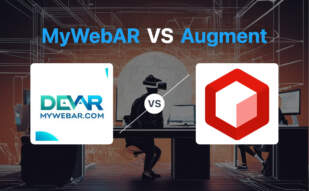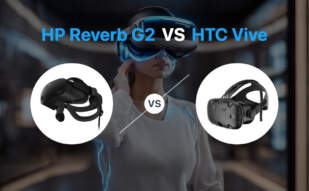When weighing Google Glass against HoloLens, your choice hinges on applicable environments and price. If you’re aiming for a sophisticated AR experience to maximize productivity in process-heavy industries, HoloLens tops. However, for a less-expansive yet resourceful and cost-effective option, especially compatible in professional environments such as factories, warehouses, or hospitals, Google Glass prevails.
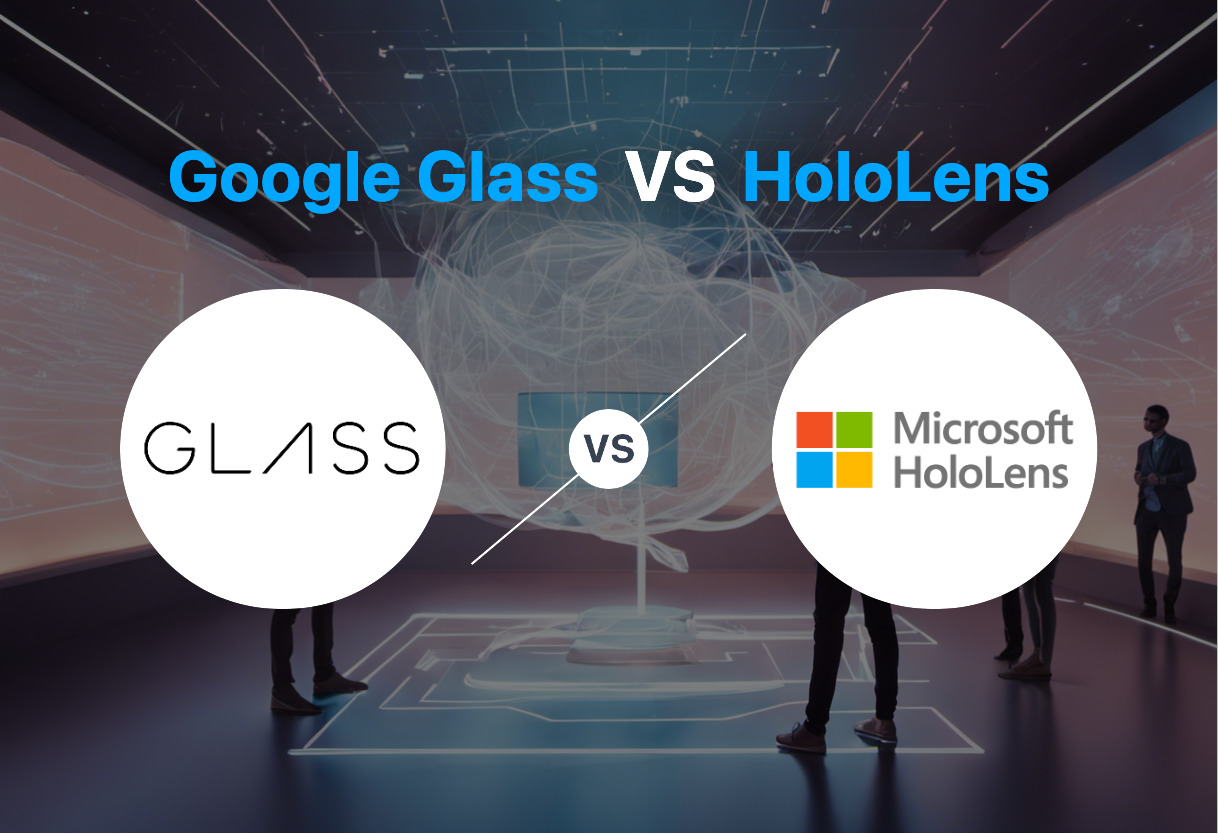
Key Differences Between Google Glass and HoloLens
- Usability: Google Glass provides subtle AR integration with daily life activities, while HoloLens offers immersive mixed reality experiences, primarily designed for specialized tasks.
- Price: HoloLens comes at a steeper price (standard $3,500, Industrial Edition $4,950) compared to Google Glass.
- Integration: Google Glass aligns well with Android and Google-based applications, while HoloLens harmonizes with Microsoft Azure and related applications.
- Industries: Google Glass finds its strength in industries such as hospitals, warehouses, and factories. On the other hand, HoloLens finds extensive applications across healthcare, manufacturing, education, and more.
| Comparison | Google Glass | Microsoft HoloLens |
|---|---|---|
| Initial Release | 2013 | 2015 |
| Latest Edition Release | Glass Enterprise Edition 2, 2019 | HoloLens 2, market |
| Technology | AR, Voice/Motion Control, Android Device | Mixed Reality, Holograms, Voice Control, Biometric Recognition |
| User Interface | Touchpad, Voice/Motion Recognition | Cortana, Azure Cloud Services |
| Display System | FSC LCOS System with Microprojector | Holographic Display |
| Integration | Google ecosystem (Google Now, Google Maps, Gmail, Google Photos), Third-Party Apps | Microsoft ecosystem (Azure, Teams), Trimble’s SketchUp Viewer, Autodesk’s FreeForm software |
| Primary Use Case | Professional Use – Factories, Warehouses, Hospitals | Mixed Sectors – Health Care, Manufacturing, Education |
| Real-world Applications | Real-time Updates, Photo/Video Capture/Share, Translations, Directions, Calls/Emails by Voice | Medical & Science Education, 3D Modeling, Remote Maintenance, Space Visualization |
| Pricing | Not Disclosed | Standard – $3,500, Industrial Edition – $4,950 |
| Future Endeavors | Expected to Work with Prescription Eyewear Frames | Extensive Applications in Businesses |
What Is Google Glass and Who’s It For?
Google Glass serves as the predecessor of wearable, Android devices designed to deliver an augmented reality experience to its users. Originally launched in 2013 and rebooted after a hiatus in 2017, the current iteration, Glass Enterprise Edition 2, caters to professional needs, finding prominent use in industries such as manufacturing, healthcare, and logistics.
With its capacity for photo/video capture, real-time updates, Google’s extensive app integration and voice controlled responses, it’s shaping the efficiencies of daily operations, especially in workplaces. A unique blend of visual, audio, and location-based interactions make this device ideal for businesses that prize innovation and efficiency.
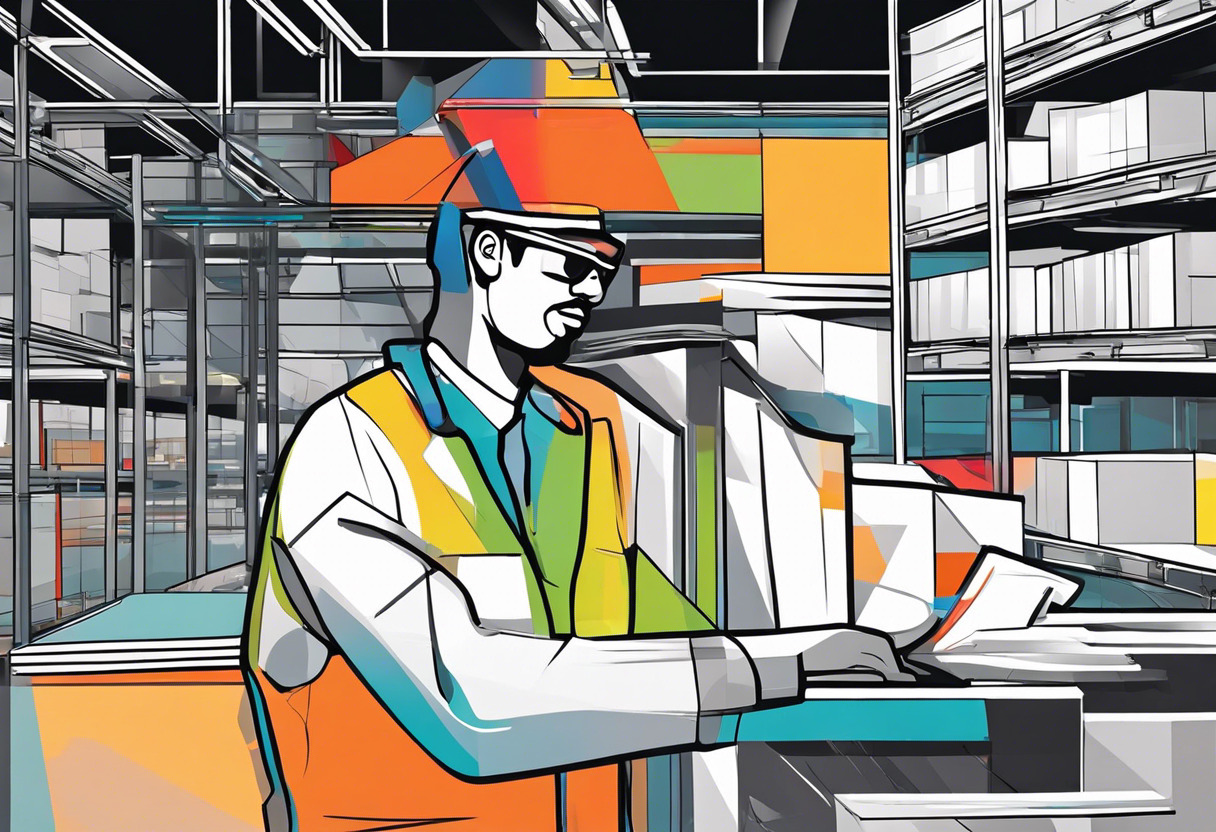
Pros of Google Glass
- Real-time updates with Google Now
- Integrated with a wide range of Google’s services
- Useful in professional environments
- Voice and gesture control
Cons of Google Glass
- Privacy concerns
- High cost of investment
- Limited compatibility with prescription glasses
- Discontinued consumer edition
What Is Microsoft HoloLens and Who’s It For?
Microsoft HoloLens is an advanced holographic tech device that has revolutionized productivity across sectors since its inauguration in 2015. The current offering, HoloLens 2, targets enterprises with a range of solutions and versions, including the standard and Industrial Edition.
With futuristic features like holographic display, voice control, and spatial audio technology, it’s found utility in diverse fields such as medical, education, and manufacturing. It’s a game-changing tool for organizations aiming for technological ingenuity, increased efficiency, and compelling real-life simulations.
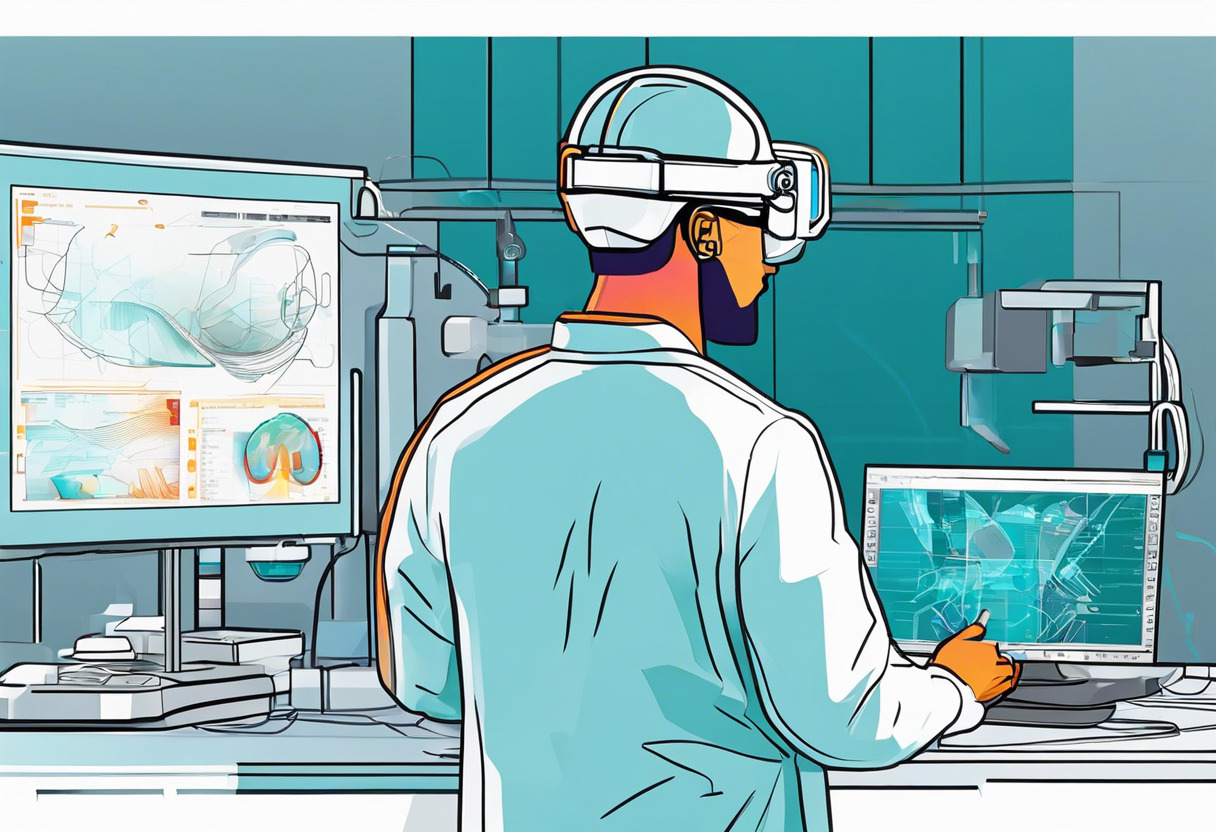
Pros of Microsoft HoloLens
- Wide-ranging enterprise applications
- Integration with Azure cloud services
- Untethered usage and biometric recognition
- Compatibility with industry standard AR software
Cons of Microsoft HoloLens
- High investment cost
- Needs development for broader consumer market
- Less mature ecosystem than Google’s
- Limitations in field of view
Google Glass vs HoloLens: Pricing
Google Glass, having a focus on enterprise solutions, does not disclose its pricing outright, while Microsoft’s HoloLens has a known premium pricing, with the standard version selling for $3,500 and the Industrial Edition for $4,950.
Google Glass
The pricing details of Google Glass are not provided given its orientation towards professional operational environments. Pricing usually differs based on the specifics of the enterprise solution required.
HoloLens
HoloLens’ product line is distinguished into two broad categories. The standard version is priced at $3,500, while the more advanced Industrial Edition sell for as high as $4,950, offering additional robustness suitable for harsher operational environments.
Final Verdict: Google Glass or HoloLens?
In the ring of AR, Google Glass and Microsoft HoloLens vie for supremacy, computations clash, and applications extrapolate to surmise the winner.
Industrial Applicators
Eyeing industry-specific applications, the HoloLens wins the round. Its adaptability to clean rooms, hazardous areas and use case versatility spanning surgery planning and deep-space vehicle construction place it ahead of the Google Glass, which concentrates more narrowly on professional settings, such as factories, warehouses and hospitals.
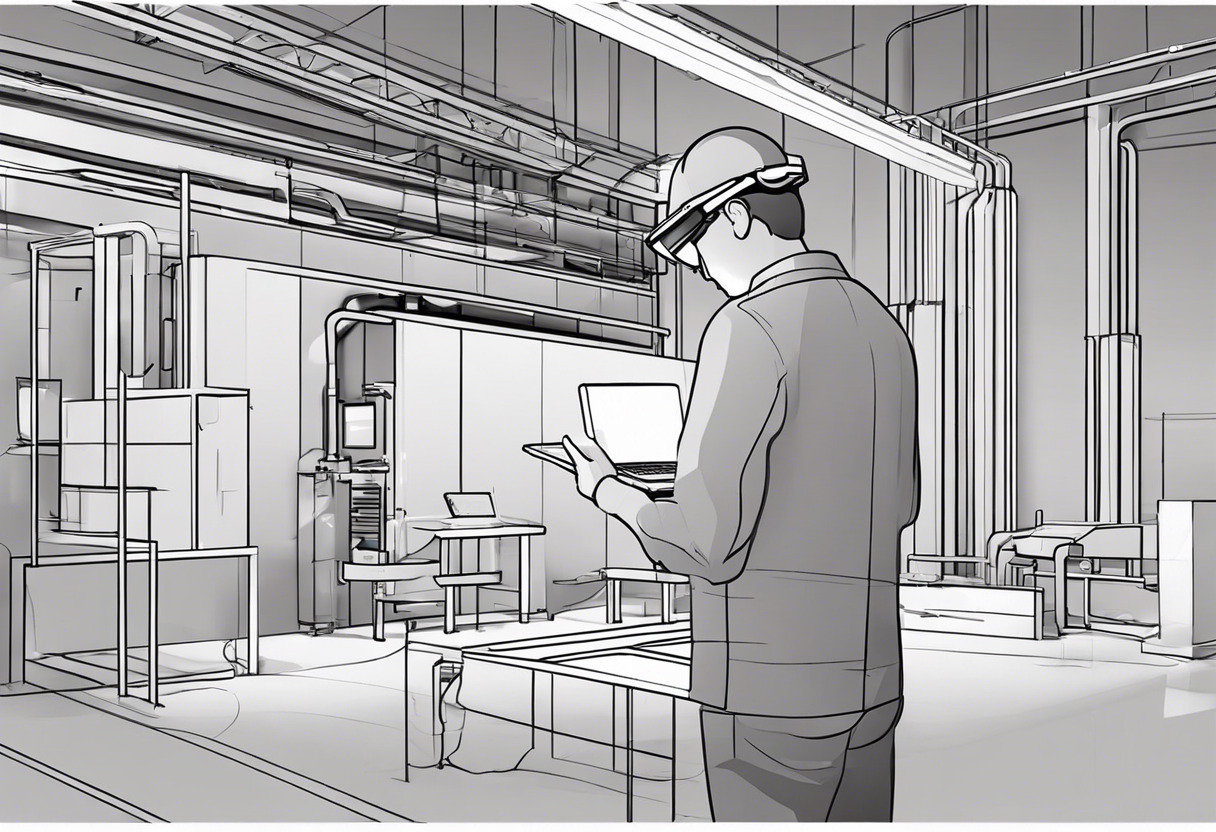
End-Consumer Interaction
For everyday applicability, Google Glass sways the balance. Its easy integration with Google Hangouts, Google Maps, voice/video calls, and email aces HoloLens’ high-end, specialized application. Feature-rich for the average user, Google Glass’ stride towards working with prescription eyewear frames solidifies its advantage in this quadrant.

Enterprise-based Developers
In the enterprise-based developer context, the semi-transparent screen and real-time updates of Google Glass offer profound benefits. Yet, the HoloLens, with its self-contained holographic device and in-depth integration with Microsoft Azure cloud services, seems more potent for this audience, prompting a richer assortment of applications.

Future Potential and Market Growth
HoloLens packs a punch when examining future potential and market growth. It is poised to revolutionize businesses through extensive applications and amplify operations. Its robust association with UX pushes it ahead of Google Glass in manifesting real-world adaptability.

The clash of Google Glass and HoloLens comprehends distinct winners in their sections. Google Glass is superior for end-consumer interaction, while HoloLens excels for industrial applicators and enterprise-based developers, and displays more significant future potential.
Hannah Stewart
Content writer @ Aircada, tech enthusiast, metaverse explorer, and coffee addict. Weaving stories in digital realms.



